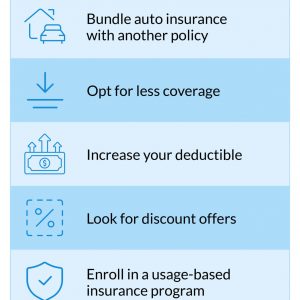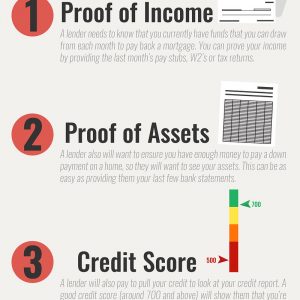“Navigating tax laws as a self-employed individual made easy.”
Introduction
Tax laws for self-employed individuals are different from those who are employed by a company. As a self-employed individual, you are responsible for paying your own taxes and keeping track of your income and expenses. It is important to understand the tax laws that apply to you in order to avoid penalties and ensure that you are paying the correct amount of taxes. This introduction provides a brief overview of tax laws for self-employed individuals.
Understanding Self-Employment Tax: What You Need to Know
As a self-employed individual, it is important to understand the tax laws that apply to you. Unlike employees who have their taxes withheld by their employers, self-employed individuals are responsible for paying their own taxes. This can be a daunting task, but with the right information, you can navigate the tax laws with ease.
The first thing you need to know is that self-employed individuals are subject to self-employment tax. This tax is a combination of Social Security and Medicare taxes and is calculated based on your net earnings from self-employment. The current self-employment tax rate is 15.3%, with 12.4% going towards Social Security and 2.9% going towards Medicare. However, only the first $142,800 of your net earnings are subject to the Social Security portion of the tax.
To calculate your self-employment tax, you will need to complete Schedule SE (Form 1040). This form will help you determine your net earnings from self-employment and calculate the amount of self-employment tax you owe. It is important to note that you will also need to pay income tax on your net earnings from self-employment. The amount of income tax you owe will depend on your total income and deductions.
One of the benefits of being self-employed is that you can deduct certain business expenses from your taxable income. These expenses can include things like office supplies, travel expenses, and equipment purchases. To qualify for these deductions, the expenses must be necessary and ordinary for your business. It is important to keep accurate records of your business expenses so that you can claim them on your tax return.
Another important tax law for self-employed individuals is estimated tax payments. Because self-employed individuals do not have taxes withheld from their income, they are required to make quarterly estimated tax payments throughout the year. These payments are due on April 15th, June 15th, September 15th, and January 15th of the following year. If you do not make these payments, you may be subject to penalties and interest.
To determine how much you should pay in estimated taxes, you will need to estimate your total income and deductions for the year. You can use Form 1040-ES to help you calculate your estimated tax payments. It is important to note that if your income or deductions change throughout the year, you may need to adjust your estimated tax payments accordingly.
Finally, it is important to keep accurate records of your income and expenses throughout the year. This will make it easier to file your tax return and ensure that you are claiming all of the deductions you are entitled to. You should keep receipts, invoices, and bank statements to support your income and expenses. You may also want to consider using accounting software to help you track your finances.
In conclusion, understanding the tax laws for self-employed individuals is essential for anyone who is self-employed. You will need to pay self-employment tax, income tax, and make estimated tax payments throughout the year. You can deduct certain business expenses from your taxable income, but you will need to keep accurate records to support these deductions. By staying organized and informed, you can navigate the tax laws with confidence and ensure that you are meeting your tax obligations.
Maximizing Deductions for Self-Employed Individuals
As a self-employed individual, it is important to understand the tax laws that apply to your business. One of the most important aspects of tax planning for self-employed individuals is maximizing deductions. Deductions are expenses that can be subtracted from your income, reducing the amount of tax you owe. Here are some tips for maximizing deductions for self-employed individuals.
First, keep accurate records of all your business expenses. This includes receipts, invoices, and bank statements. You should also keep a log of your business mileage if you use your personal vehicle for business purposes. By keeping accurate records, you can ensure that you don’t miss any deductions when it comes time to file your taxes.
Second, take advantage of the home office deduction if you work from home. To qualify for this deduction, you must use a portion of your home exclusively for business purposes. This can include a separate room or a portion of a room. You can deduct a portion of your rent or mortgage interest, property taxes, utilities, and other expenses related to your home office.
Third, consider setting up a retirement plan for your business. Contributions to a retirement plan are tax-deductible, which can help reduce your taxable income. There are several types of retirement plans available for self-employed individuals, including a Simplified Employee Pension (SEP) plan, a Solo 401(k) plan, and a SIMPLE IRA.
Fourth, don’t forget about health insurance premiums. If you are self-employed and pay for your own health insurance, you may be able to deduct the premiums on your tax return. This deduction is available even if you don’t itemize your deductions.
Fifth, consider hiring a tax professional to help you with your tax planning. A tax professional can help you identify all the deductions you are eligible for and ensure that you are taking advantage of all the tax benefits available to you. They can also help you with tax planning throughout the year, so you can minimize your tax liability and avoid any surprises come tax time.
In addition to these tips, there are several other deductions that may be available to self-employed individuals. These include deductions for business travel, meals and entertainment, office supplies, and professional development expenses. It is important to keep track of all your business expenses throughout the year so you can take advantage of all the deductions you are eligible for.
In conclusion, maximizing deductions is an important part of tax planning for self-employed individuals. By keeping accurate records, taking advantage of deductions for home office expenses, retirement plan contributions, health insurance premiums, and other business expenses, you can reduce your taxable income and minimize your tax liability. It is also important to work with a tax professional to ensure that you are taking advantage of all the tax benefits available to you. With careful planning and attention to detail, you can keep more of your hard-earned money in your pocket and avoid any unpleasant surprises come tax time.
Navigating Quarterly Estimated Tax Payments as a Self-Employed Individual
As a self-employed individual, it is important to understand the tax laws that apply to you. One of the most important aspects of tax law for self-employed individuals is navigating quarterly estimated tax payments. Quarterly estimated tax payments are payments made to the IRS four times a year to cover your tax liability as a self-employed individual. These payments are required because self-employed individuals do not have taxes withheld from their income like traditional employees do.
The first step in navigating quarterly estimated tax payments is to determine if you are required to make them. If you expect to owe $1,000 or more in taxes for the year, you are required to make quarterly estimated tax payments. It is important to note that this requirement applies to both federal and state taxes.
Once you have determined that you are required to make quarterly estimated tax payments, the next step is to calculate how much you owe. This can be a complex process, as it involves estimating your income and expenses for the year. It is important to be as accurate as possible in your estimates, as underestimating your tax liability can result in penalties and interest.
To calculate your quarterly estimated tax payments, you will need to use Form 1040-ES. This form will help you estimate your tax liability for the year and determine how much you need to pay each quarter. It is important to note that the amount you owe may change throughout the year as your income and expenses fluctuate.
Once you have calculated your quarterly estimated tax payments, the next step is to make the payments on time. The due dates for quarterly estimated tax payments are April 15th, June 15th, September 15th, and January 15th of the following year. It is important to mark these dates on your calendar and make the payments on time to avoid penalties and interest.
If you find that you have overpaid or underpaid your quarterly estimated tax payments, you can adjust your payments for the next quarter. This can be done by using Form 1040-ES to recalculate your estimated tax liability and adjust your payments accordingly.
In addition to quarterly estimated tax payments, self-employed individuals are also responsible for paying self-employment taxes. Self-employment taxes are a combination of Social Security and Medicare taxes and are calculated based on your net earnings from self-employment. These taxes are in addition to income taxes and must be paid on a quarterly basis.
Navigating quarterly estimated tax payments as a self-employed individual can be a complex process, but it is essential to staying compliant with tax laws and avoiding penalties and interest. By understanding the requirements and following the steps outlined above, you can ensure that you are meeting your tax obligations and staying on top of your finances as a self-employed individual.





